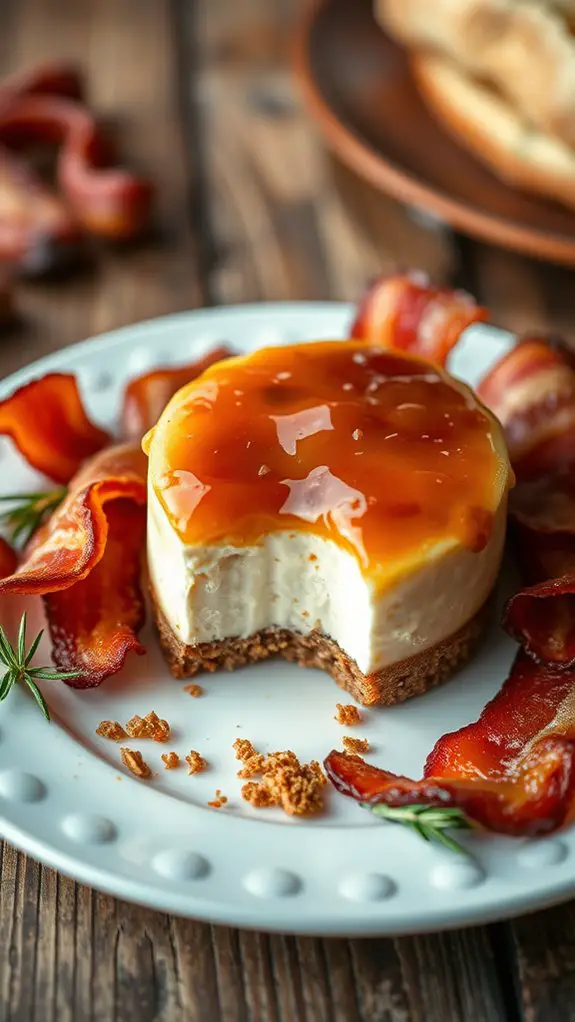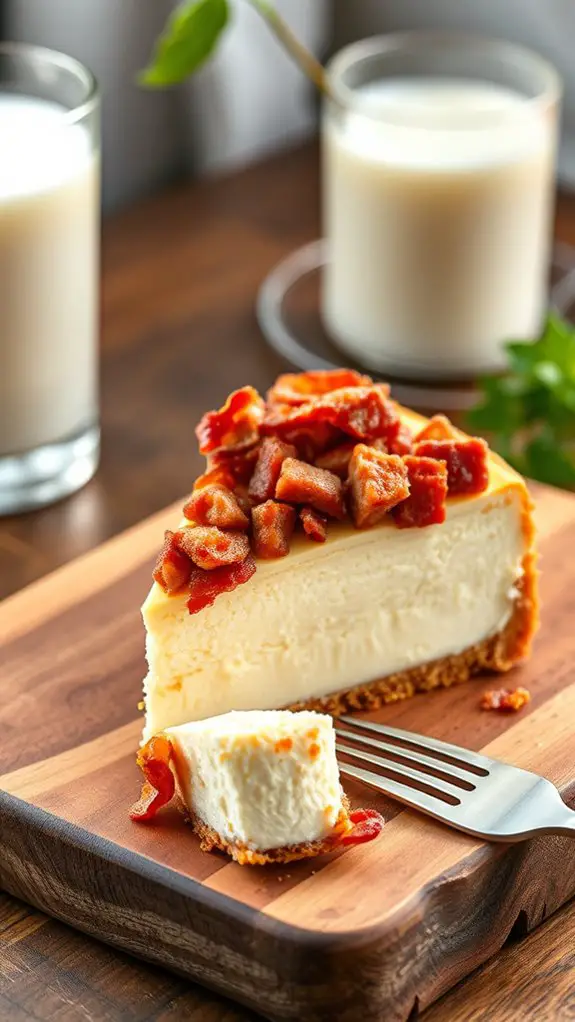You're intrigued by the concept of carnivore cheesecake, aren't you? This unique dessert blends the rich, creamy texture of traditional cheesecake with the savory flavors of cooked meats. Its origins trace back to the late 19th century, showcasing the culinary ingenuity of its creators. Explore its history, recipe, and nutritional guide to uncover why this unconventional treat has garnered a loyal following.
History

Although the exact origins of carnivore cheesecake remain unclear, evidence suggests its genesis can be traced back to small, specialized bakeries in urban areas during the late 19th century.
Drawing inspiration from ancient desserts and the culinary evolution of the time, these pioneering bakers experimented with unconventional ingredients, blending savory meats with the rich creaminess of cheesecake.
What emerged was a delectable fusion that challenged traditional dessert boundaries, enchanting the palates of adventurous eaters.
This innovative confection soon gained a devoted following, paving the way for its modern-day resurgence as a sought-after delicacy that continues to push the limits of what a cheesecake can be.
Recipe

Carnivore Cheesecake is a decadent and indulgent dessert that combines the richness of cheesecake with the savory flavors of meat. This unique creation is perfect for those who want to satisfy their sweet and savory cravings in one delectable bite.
The combination of creamy cheesecake and savory meats may seem unconventional, but the resulting flavor profile is a harmonious balance of contrasting elements. The creamy and tangy cheesecake base provides a luscious foundation, while the addition of various meats, such as bacon, sausage, or even ground beef, adds a satisfying and unexpected twist.
Ingredients:
- 24 oz cream cheese, softened
- 1 cup granulated sugar
- 1/4 cup all-purpose flour
- 1/4 cup heavy cream
- 3 large eggs
- 1 lb cooked and crumbled bacon, sausage, or ground beef
Instructions: Preheat the oven to 325°F. In a large mixing bowl, beat the cream cheese with a hand mixer until smooth and creamy. Gradually add the sugar and flour, mixing until well combined.
Add the heavy cream and eggs, one at a time, beating well after each addition. Fold in the cooked and crumbled meat. Pour the mixture into a greased 9-inch springform pan. Bake for 55-65 minutes, or until the center is almost set.
Allow the cheesecake to cool completely before removing the springform ring. For best results, chill the Carnivore Cheesecake in the refrigerator for at least 4 hours, or preferably overnight, before serving.
This allows the flavors to meld and the texture to set up perfectly. Serve chilled and enjoy the unique and indulgent combination of sweet and savory.
Nutritional Guide
The Carnivore Cheesecake's nutritional profile reflects its indulgent nature. With a caloric content around 400 calories per slice, it's a decadent treat.
Yet, the key ingredients offer substantial nutritional benefits. The cream cheese provides a rich source of protein, calcium, and vitamin A, while the eggs contribute high-quality protein and essential vitamins and minerals.
The heavy cream lends a velvety texture and supplies satiating fats. Even the sweetener, whether sugar or a keto-friendly alternative, delivers antioxidants.
Thoughtfully crafted, this carnivore-approved dessert can be enjoyed as part of a balanced diet when portioned mindfully. Its nutritional makeup exemplifies the delicious harmony between flavor, indulgence, and wellness.
Final Thought
With the Carnivore Cheesecake's nutritional profile explored, you can now savor this indulgent treat as part of a balanced approach to wellness.
Recognizing the health benefits, you'll find culinary creativity shines through in each slice. The complex interplay of rich flavors and textures elevates this carnivore-friendly dessert, making it a delightful indulgence without compromising your dietary goals.
Enjoy the Carnivore Cheesecake as a nutritious yet decadent finale to any meal, knowing you've found a harmonious balance between flavor and function.